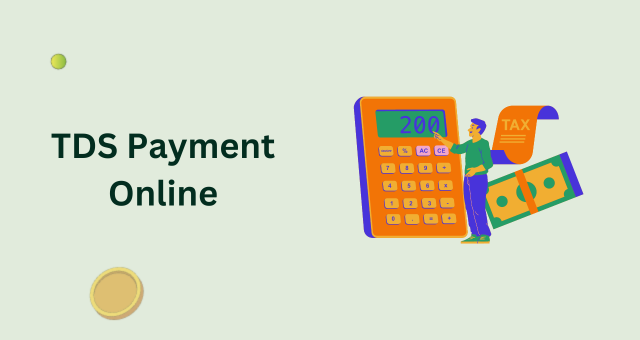TDS stands for Tax Deducted at Source, the Income Tax deducted from the payment at the time of paying such as rent, salary, commission, interest, professional fees, etc. Although the person receiving the payment has the liability to pay the income tax, the TDS provision ensures that the business making the payment deducts the tax in advance and pays it to the government through a TDS challan payment online. That means the receiver receives the net payment amount after reducing the TDS.
At the time of filing a return, they can add the gross amount to their income and adjust the TDS amount in their final tax liability. Based on this calculation, they can take credit for the amount they already paid as tax. However, if their tax liability is more than a certain limit, their tax gets adjusted from the deposited TDS.
When and Who Deducts the TDS?
The business making a specific payment, as mentioned in the Income Tax Act, is responsible for deducting TDS at the time of paying, except for individuals and HUFs whose books do not require auditing. After deducting the TDS, the business owner should deposit it to the government before the due date and issue a TDS certificate. The recipient can use this document to claim a refund when filing ITR if their tax deduction exceeds their tax liability.
Points to Remember When Deducting TDS
Here are a few things a business owner must keep in mind when deducting TDS:
- The person or business owner making the payment and the person receiving it should have a valid PAN. If the PAN is not available, the TDS rate increases.
- The business owner should deduct the TDS at the rate mentioned in the Income Tax Act of 1961 sections. For instance, it is 10% for salaries, commissions, rent, etc., while 30% is for lottery and game winnings.
- The business owner should not detect the TDS if the payment receiver has made a self-declaration for investments in FORM 15G/15H or if they present an exemption certificate from the Assessing Officer.
- No TDS is deductible for payments to the Indian government, the Reserve Bank of India, or any central act corporation.
Responsibility of the Business Deducting the TDS
The business deducting TDS is responsible for the following:
- Obtaining a Tax Deduction Account Number and mentioning it in all TDS-related documents.
- Deducting the TDS at the applicable tax rate.
- Depositing the TDS deduction to the government before the due date.
- Filing TDS returns within the due date.
- Issuing the TDS certificate to the recipient before the due date.
Stepwise Process to Pay TDS Online
Want to know how to pay TDS Online? Follow this stepwise procedure:
- Visit the e-filing portal at ‘www.incometax.gov.in’.
- Under ‘Quick Links’, select ‘e-Pay Tax’.
- Enter the TAN (Tax Deduction Account Number), a 10-digit alpha-numeric number that authorises a person or business owner to deduct TDS.
- Enter the mobile number for OTP verification.
- Click ‘Continue’.
- After verifying the on-screen details, verification, click ‘Continue’ to proceed.
- Select the correct assessment year, payment type, and type of deductee, fill in the necessary details and click ‘Proceed’.
- Select the payment mode from net banking, credit/debit card, RTGS/NEFT, payment gateway, or pay at the counter.
- Click Pay Now to complete the TDS challan payment online and download the form.
Benefits of TDS Challan Payment Online
With technological advancements, making a TDS challan online payment has become much easier and faster than ever. Listed below are a few advantages of paying TDS online:
- Time-Saving: Online payment is a quick process that does not require standing in queues and filling out various forms. The online process remits the payment instantly to the government.
- Convenience: One may complete the TDS challan payment online from the comfort of their home or office without any physical visits to the concerned offices.
- Security: The online payment process is completely secure due to advanced encryption technology, two-factor authentication, etc.
- Minimal Paperwork: Online TDS payment minimises the requirement for physical paperwork. Apart from streamlining the payment process, it reduces paper wastage and saves the environment.
Now that the TDS challan payment online process is clear and you understand the benefits of doing that online, make the payments regularly before the due dates to avoid penalties and complications. Use the Kotak payment gateway to complete your payment easily and quickly.











